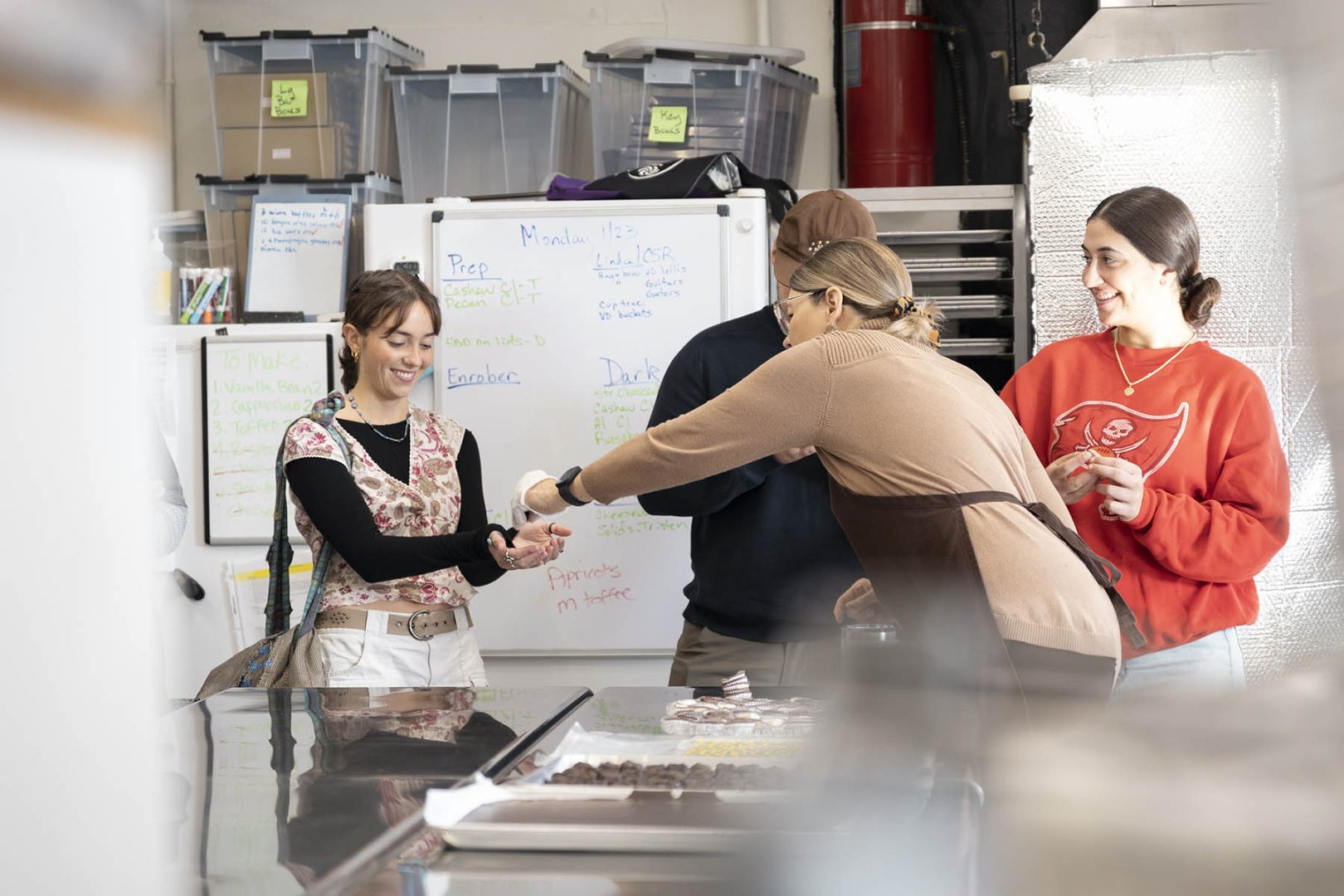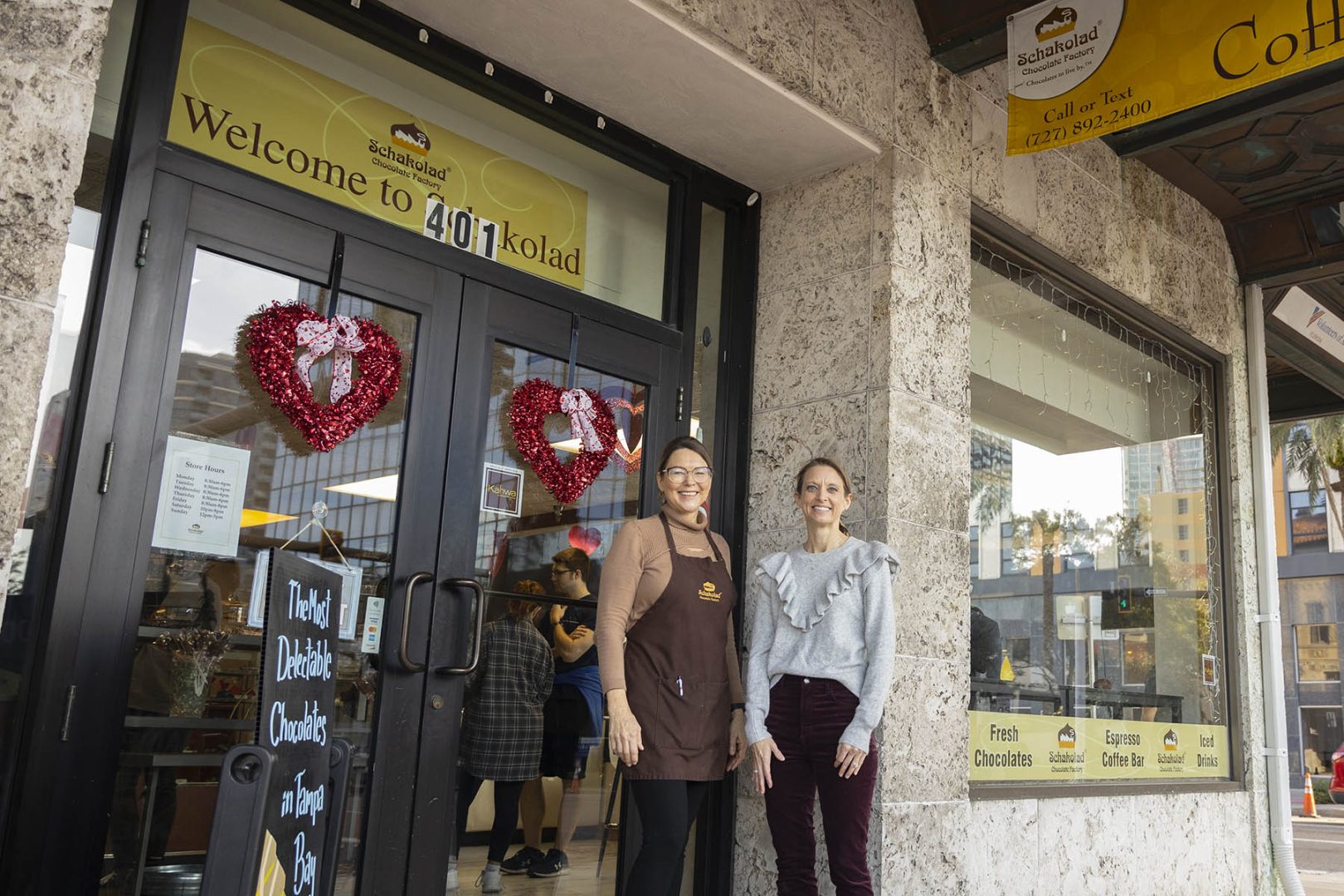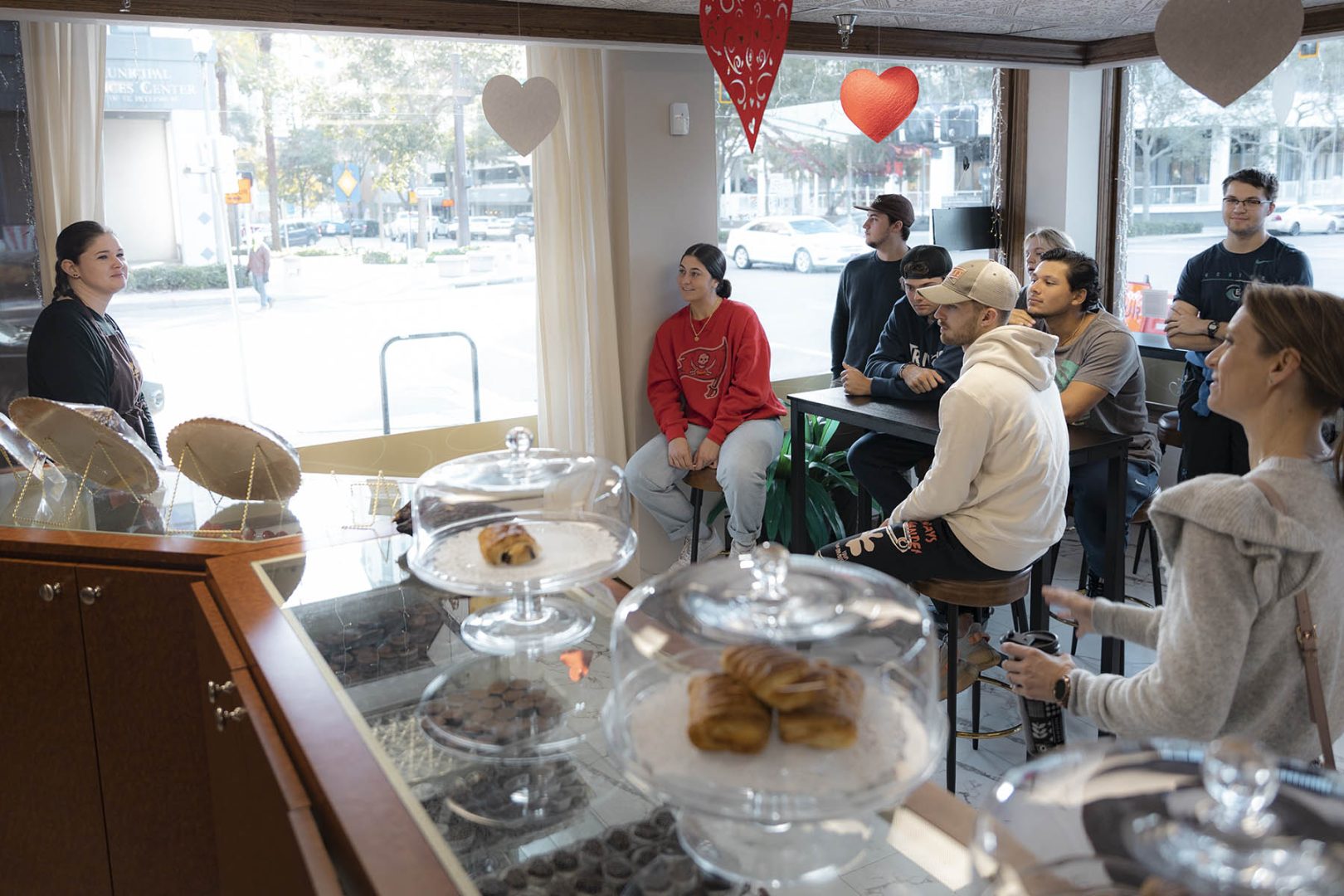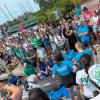The idea of teaching a course about the chemistry of candy came to Crystal Young-Erdos, Ph.D., … when else? … last Valentine’s Day. “What a perfect topic not only to attract students,” says the assistant professor of chemistry at Eckerd College, “but to teach foundational chemistry concepts.”
Young-Erdos looked around for similar courses offered elsewhere and found a candy chemistry class at Washington & Jefferson College, her alma mater. “I read about their ideas and successes, so I combined some of their approaches with other ideas I had, like visiting a chocolate shop,” she says. “I offered this course for the first time and I was really excited.”
As were her students. Her class, which was one of more than 60 Winter Term courses offered by Eckerd last January, filled up quickly, with an extensive waiting list. Of the 20 students enrolled, only five were science majors. “Most of them have not had a science course since high school,” Young-Erdos adds, “and all of them are juniors and seniors.”
The first few days were heavy on basic chemistry. “I teach them about the basic structure of an atom, the periodic table and how we combine atoms to make molecules,” Young-Erdos explains. “We then talk about sugar, fat and protein molecules—the similarities and differences, and reactions they can undergo to produce colors and flavors in candy. Students explore these concepts while making rock candy, fudge and caramel in the classroom and investigating food dyes and sugar reactions in the lab. They get to see how many parallels there are between successfully executing an experimental protocol in the lab and a recipe in the kitchen.
“My primary goal is to peel back the layers so that chemistry is not so daunting,” Young-Erdos says.
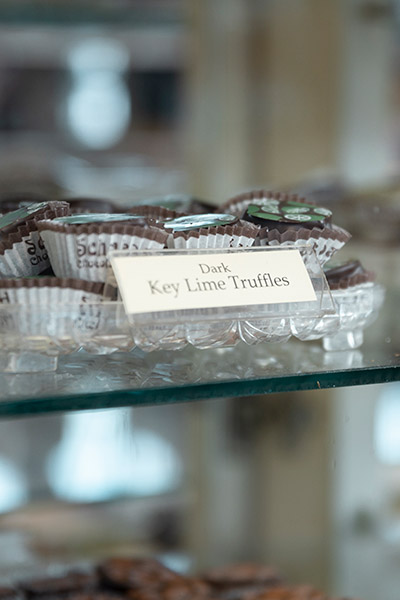
“And they can then share what they know with others. I have them write reflective pieces for me, and some of them have talked about conversations with peers on campus, conversations they’re initiating based on something they learned in my class. That’s exactly what I want them to do. Find the relevance.”
On a recent chilly Tuesday morning, Young-Erdos and her students gathered inside Schakolad Chocolate Factory, an iconic chocolate shop in downtown St. Petersburg where chocolates are made fresh on the premises. Schakolad owner Jane Rakestraw and her daughter, shop manager Darryn Rakestraw, explained the chocolate-making process while the students looked on.
“I’ve been telling my students that the visit to Schakolad was to see some of our course topics in action,” Young-Erdos says. “The visit achieved exactly that. For example, when we were hearing about the production of chocolate and the fermentation step, my student Sara [Soterakis] looked at me and gave me a thumbs-up. Indeed, we talked all about the microorganisms of fermentation and the important molecules they produce when we learned about chocolate in class.
Jane Rakestraw, who has owned Schakolad since 2019 and safely guided the business through the pandemic, says an important takeaway from the visit, besides some free samples, was the process involved. “Learning about how things are made always adds to the value of a person’s knowledge base,” she says. “Something more to put in their bag of tricks.”
Logan Dudney, a senior marine science and mathematics student from Lemont, Illinois, says The Chemistry of Candy “is one of the most fun Winter Term courses I’ve ever had. I took the course mostly because it seemed like a fun chemistry class, but being a Type 1 diabetic definitely helped push me to choose it.” (According to the CDC, more than 37 million Americans have diabetes, which is a chronic health condition that affects how the body converts food into energy.)
“I last took a chemistry class my sophomore year, and I found out that a lot of the chemistry I learned then is still there [in my brain]. I also thought it would be a good application of my chemistry and lab skills, and I’m definitely more mindful of the candy I’m consuming now that I know the inner workings of it.”
The last time Sara, a junior marketing major from Miami, took a chemistry class was in high school. “I’ve never had a class where the professor is so passionate about what she does,” Sara says. “Professor Young-Erdos really makes learning chemistry fun. I told her I wish I could take the course again.”
Young-Erdos told the students on this year’s waiting list, and will tell any other interested students, to look for The Chemistry of Candy again next January. “It’s been a great success,” she says. “I look forward to offering it regularly. I can’t think of a sweeter way to spend a Winter Term.”





